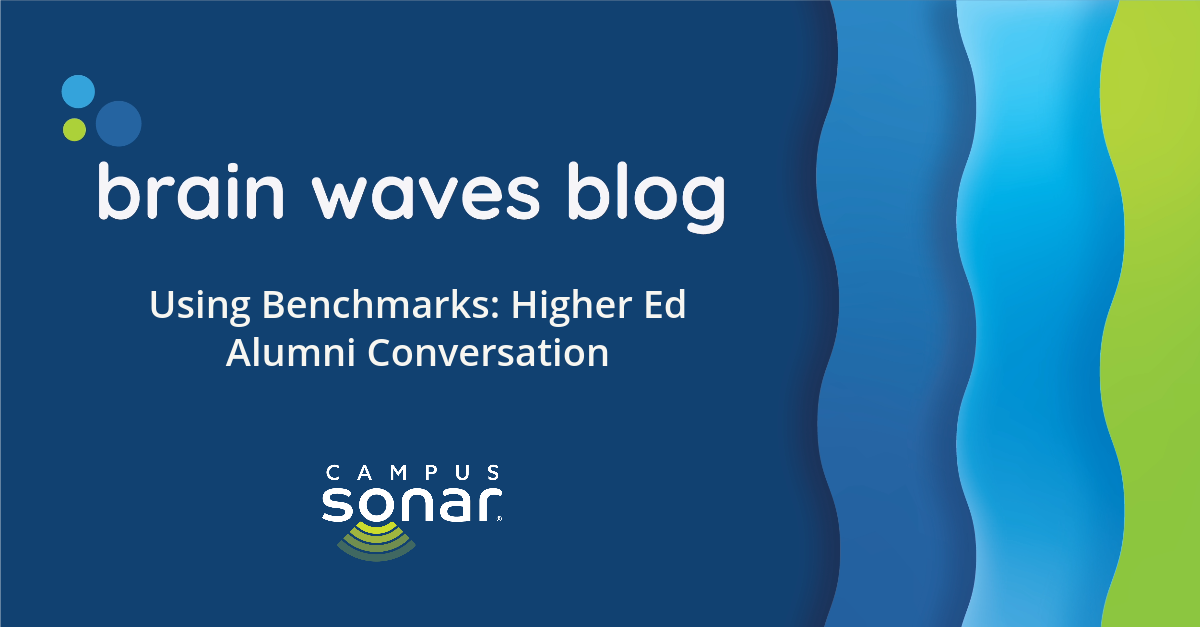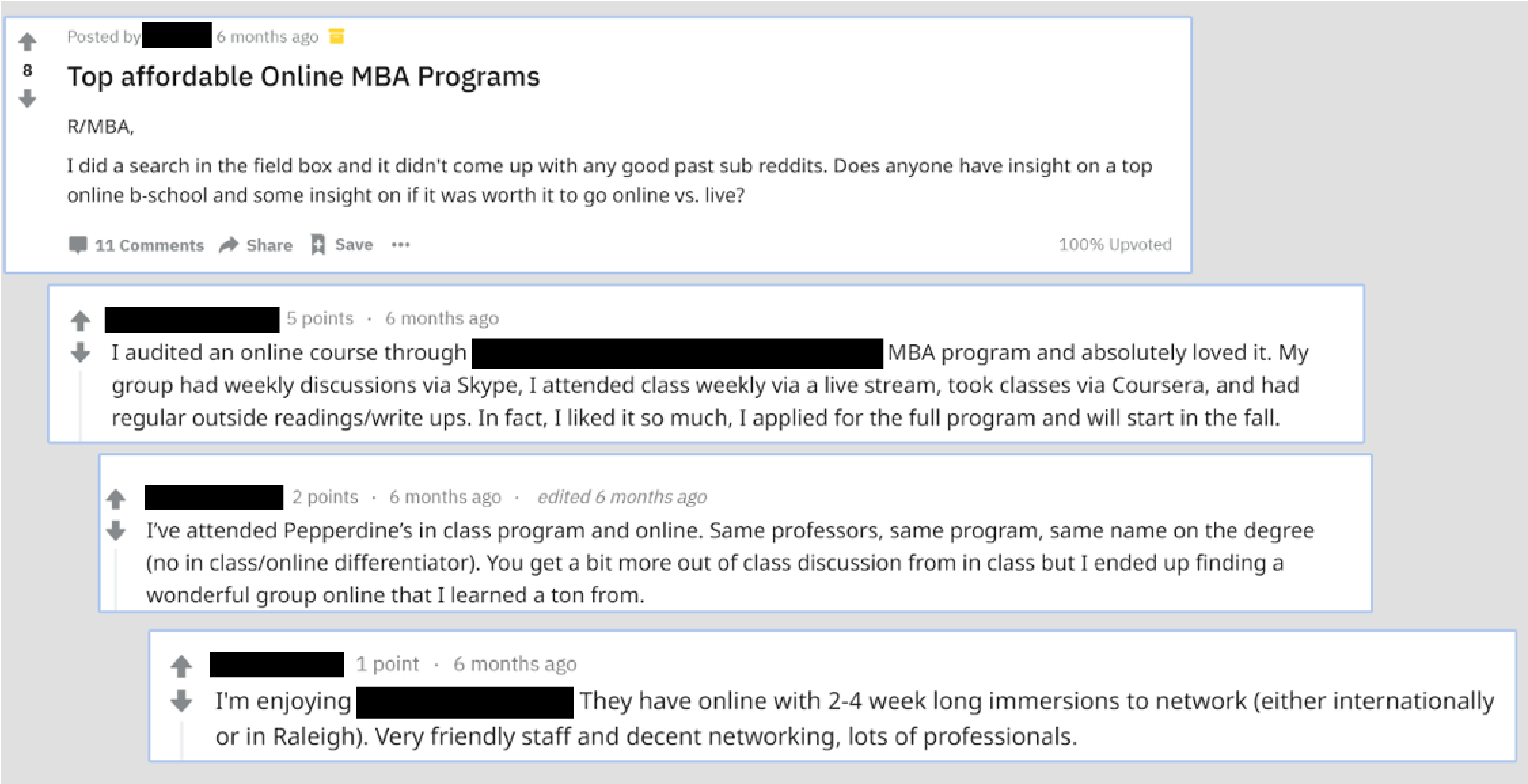Using Benchmarks: Higher Education Alumni Conversation

With graduations across the country this spring, universities gained thousands of new alumni. But as soon as students graduate and leave campus, it becomes harder to engage with them and continue to build a relationship. One of the keys to connecting with new alumni is to not wait until they’ve graduated, but to engage with them before they become alumni. The more engaged and connected students are to an institution, the more likely they are to become engaged alumni. This speaks to Dr. Jay Le Roux Dillon’s idea of alumni identity—the measure of how deeply a graduate associates their own self-identity with their alma mater. The closer alumni feel to your institution, the more they’ll feel compelled to give—both time and money.
One way to build better connections with alumni is to begin thinking about how alumni think of themselves in relation to their school, not how we, the higher ed industry, want to categorize them. To better understand what they’re thinking, we can listen to their conversation, which is exactly what we did in our report 2019 Online Conversation Benchmarks for Higher Education. We listened to the online conversations of 65 representative higher education institutions to understand many things, including what alumni talk about. We segmented the alumni conversation we found by four main characteristics, then identified strategic insights you can use to compare your institution’s online conversation and take action.
Alumni Conversation Volume
In analyzing the historical online conversation data of our sample of higher education institutions, we found that alumni are online, engaging in conversations about their alma mater. But they often don’t identify their alma mater in their bio or reveal their alumni status, making it difficult for us to know which part of an institution’s conversation is from alumni. In some cases, we can dig deeper and look at LinkedIn to find where an individual graduated from. For this research, our Social Media Data Analysts relied on authors to self-identify online as an alumnus.
Self-identification is when authors include phrases such as “graduated from, alumni of, etc.” in their mentions. In the following Instagram post, the author mentions her alma mater, but doesn’t tag George Mason University. The only way George Mason would find the mention is if they were listening for a key phrase like “received her degree at.”


Benchmark
After our analysts gathered the online conversation from the sample, they segmented and analyzed the volume of alumni conversation within each institution’s total conversation. It ranged from nearly 26,500 times in a year to nearly nothing. The median of the range was 12, which means 50 percent of the sample earned mentions from alumni fewer than 12 times/year, while 50 percent earned more than 12 mentions per year. Our benchmark likely understates the actual conversation from alumni; when working with an individual institution, we use a range of tactics to identify as much alumni conversation as possible.
We also looked at the volume of alumni conversation on news sites. Some institutions had no alumni news mentions, while others had as many as 102,000 per year. When we excluded an outlier, the range shrunk to 0 to 5,928 with a median of 36.
Annual Conversation about Alumni
Insight and Action
Alumni tend to be talked about more on news sites and conversation from alumni typically occurs on social platforms, where they share current or past experiences about their alma mater. The following Reddit posts are an example of an alumni conversation about personal experiences in online MBA programs. The conversation is good insight that you might use as strategic intel to inform your own program development. Or, if any of the programs mentioned in the thread are listening, it might be an opportunity to private message (PM) the users to inquire about other ways to share their experience. For anyone taking this route of engagement, it's important to remember to engage from an individual account—not a school account.

Action: Every mention you find through listening represents an opportunity to engage with an alumnus (e.g., to congratulate them or invite them to share experiences on campus) or to gather intelligence that might better inform appeals and identify prospective donors. When you find alumni mentions, add the information to your alumni database so it can be referenced in the future as your relationship with them develops.
The following Instagram post is about an informal, impromptu alumni reunion that happened organically, not through a formal alumni event hosted by the school. This is a great time to chime into the conversation because the author is already feeling nostalgic about their time on campus.
Another Instagram post includes a plain text mention of Rhodes College. If you look at the comments, you'll notice they include other Instagram users who self-identify as Rhodes alumni.
Benchmark
Other benchmarks you can use to compare your institution include: program type, institution type, size by enrollment, and program focus. When we looked at institution type, there was wide variation between public, private nonprofit, and private for-profit. On average, public institutions outperformed private institutions with the number of alumni mentions.
| Public | Private Nonprofit | Private For-Profit | |
| Median | 180 | 83 | 50 |
| Range | 0–6,295 | 0–129,252 | 0–725 |
Looking at size by enrollment, we found that the larger the enrollment, the more alumni there were talking about the institution online.
| Exclusively Grad | Very Small | Small | Medium | Large | |
| Median | 26 | 17 | 186 | 725 | 4,630 |
| Range | 6–339 | 0–243 | 0–1,917 | 57–2,012 | 283–129,252 |
When we looked at program type, we found that institutions with doctoral and masters programs have the most alumni mentions compared to other program types.
| Art / Music / Design | BA | Professional | Doctoral | Faith | Masters | Health | |
| Median | 26 | 75 | 6 | 4,148 | 33 | 200 | 18 |
| Range | 5–1,630 | 0–1,917 | 0–1,788 | 662–129,252 | 0–160 | 0–1,033 | 0–378 |
Insight and Action
The increase in mentions for large, public institutions may be because they have more graduates and a larger alumni community who are online talking about their institution. It may also indicate that a metric other than institution type is more closely tied to alumni engagement online. Larger schools most likely also have more resources to use in fostering an online alumni community.
There’s an overlap with institution type and enrollment size (public schools tend to be large), but enrollment size appears to be tied more strongly to alumni engagement online. This is supported by the fact that when we look at schools that are classified as doctoral (i.e., large and typically public), we see more alumni engaged online.
When we looked at program type, institutions with doctoral or masters programs have more mentions. Students in these programs tend to be in school longer and are usually more committed to their program and institution, which might account for the increase in mentions.
Action: The larger the enrollment, the bigger the pool of alumni talking online. These schools also tend to be public, and public schools see higher alumni engagement. The more alumni engagement you have, the more opportunity you have to build relationships and gather information about alumni to inform future opportunities.
If you’re a smaller school, you most likely have a lower volume, but the conversation may be more meaningful since you’re more likely to have individuals who are personally invested in the institution. We generally found that small, private nonprofit institutions have more positive sentiment. Engaging with your alumni can create more positive sentiment, solidify relationships, and build affinity.
What Does this Mean for You?
The benchmarks from the report allow you to compare your institution type, size, and program type to determine how much your alumni may be talking about you. If you listen to your institution’s online conversation, you can find information that can inform more authentic relationship building. And while not every mention will require an action or be an engagement opportunity, you can use the information to connect with alumni in a meaningful way based on the information you discover through social listening. Connecting the dots between what your alumni are actually caring and talking about will make for more impactful opportunities for you to build your relationships with them.

